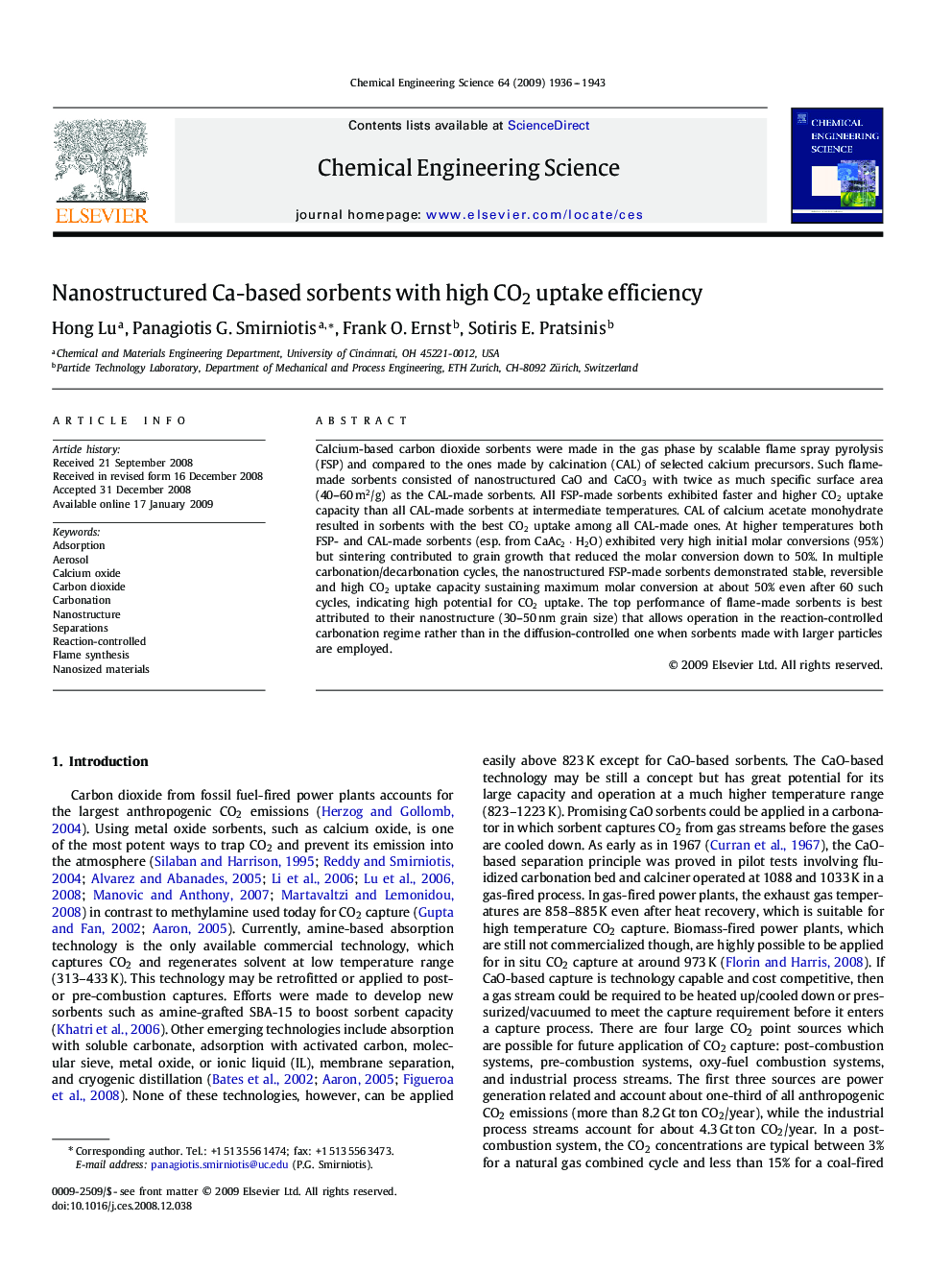| Article ID | Journal | Published Year | Pages | File Type |
|---|---|---|---|---|
| 157280 | Chemical Engineering Science | 2009 | 8 Pages |
Calcium-based carbon dioxide sorbents were made in the gas phase by scalable flame spray pyrolysis (FSP) and compared to the ones made by calcination (CAL) of selected calcium precursors. Such flame-made sorbents consisted of nanostructured CaO and CaCO3 with twice as much specific surface area (40–60 m2/g) as the CAL-made sorbents. All FSP-made sorbents exhibited faster and higher CO2 uptake capacity than all CAL-made sorbents at intermediate temperatures. CAL of calcium acetate monohydrate resulted in sorbents with the best CO2 uptake among all CAL-made ones. At higher temperatures both FSP- and CAL-made sorbents (esp. from CaAc2·H2O) exhibited very high initial molar conversions (95%) but sintering contributed to grain growth that reduced the molar conversion down to 50%. In multiple carbonation/decarbonation cycles, the nanostructured FSP-made sorbents demonstrated stable, reversible and high CO2 uptake capacity sustaining maximum molar conversion at about 50% even after 60 such cycles, indicating high potential for CO2 uptake. The top performance of flame-made sorbents is best attributed to their nanostructure (30–50 nm grain size) that allows operation in the reaction-controlled carbonation regime rather than in the diffusion-controlled one when sorbents made with larger particles are employed.
